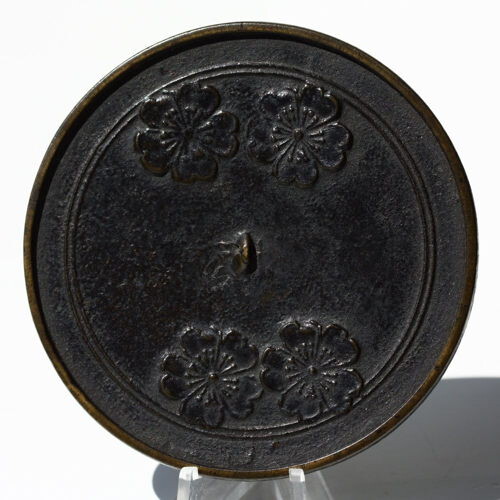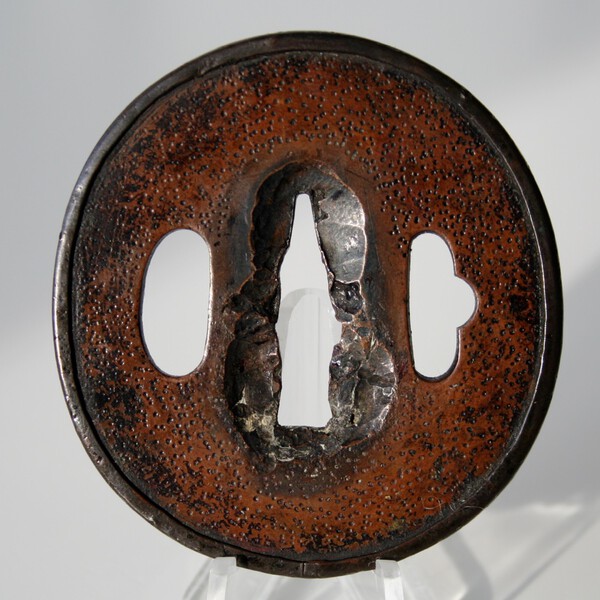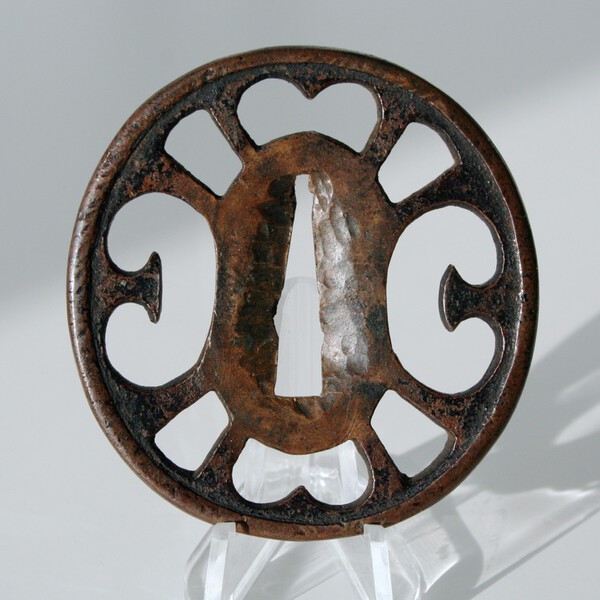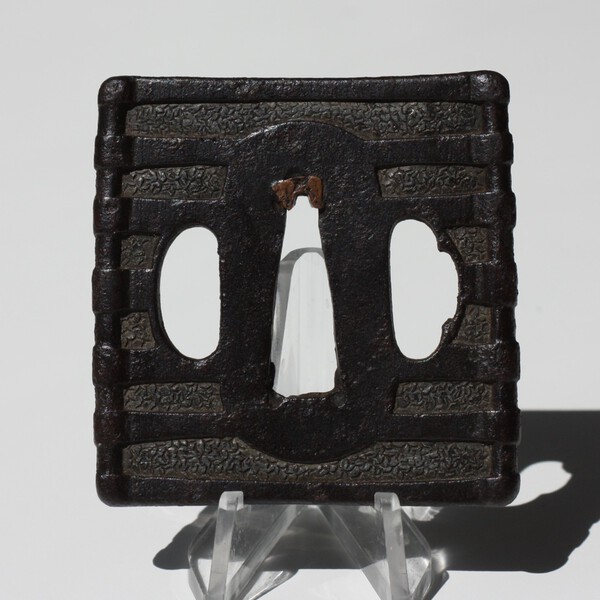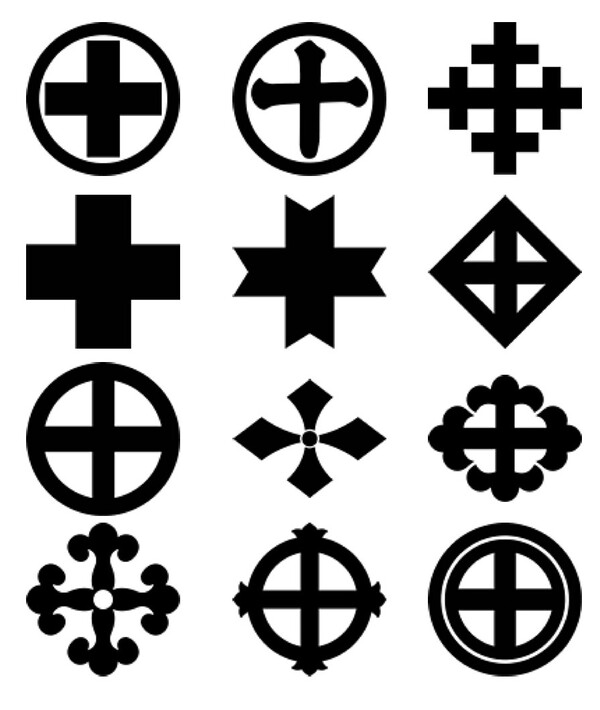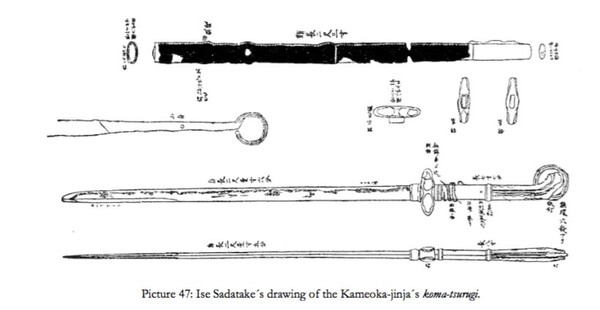-
Posts
3,105 -
Joined
-
Last visited
-
Days Won
26
Everything posted by Marius
-
-
I agree with Tim. 100%.
-
Thanks, Peter A great video.
-
I just wanted to share this experience with you. I have recently bought a sword from Fred (www.nohonto.com). Upon inspection by a togishi it turned out it had hagire, practically invisible, as it was covered with rust. Fred offered me either full refund or a discount (sword was rare and in nice koshirae). That is what I call great service.
-
Since I have sold this tanto to Hamish, let me repeat - I have sold it as what it is, a later utsushi (or just copy) with a fake signature of Rai Kuniyoshi. It was never advertised as anything that it is not. And no, it is not tired, pretty healthy and the nakago looks much much younger than it should if this were Rai. I wish I had my pics, but I have deleted them
-
Hamish, you didn't I have written the above rather jokingly, so do not worry
-
Hamish, gee, have I told you it is a Yamashiro blade? It was advertised as an utsushi by god knows whom. If it turns out to be a real Kyo-mono, I will take it back for a full refund
-
Nice work! You have even included that single uchinoke
-
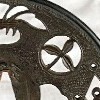
Beware! Tachi Koshirae Not Old......ebay.
Marius replied to Kai-Gunto's topic in Auctions and Online Sales or Sellers
Bling effect. Many people love shiny golden things, like magpies. -
Sloppy as in: "I won't follow the outline of the sanbon sugi, I'll run the hazuya halfways into the hamon so that peaks are not covered" Yes, regular sanbonsugi is "boring" but Mino many swords were made for business and not as art. You got yourself an honest sword. Sending it to shinsa will be a waste of time and money. It will come back with "Kanemoto" and no further explanation. You won't even know the generation, so what's the point?
-
They have been made for the Dothraki.
-
Nice one, Klaus, thanks But it is just a weird wakizashi, nothing else. Brian has wrapped it up nicely in that thread. The smith has forged this because he could. Show-off.
-
I am not quite sure there was anything like a kubikiri tanto. When you look at sources like scrolls (Mongol Invasion Scroll or Heiji Scroll) you see samurai cutting off the head of their opponent with a tanto. It would be rather stupid to carry a specialised tool into combat, one that is so unwieldy and has a blunt point, meaning that you cannot stab with it. I think the source of this myth is some BS that Japanese dealers were telling their new gaijn clients in order to sell innocent gardening tools. Myths are persistent, however. Spinach is not more rich in iron than many other edible plants. "Christian" tsuba are most likely a myth. Etc...
-
Ah, you have discovered the wonders of hadori polish. This "suguha" has nothing to do with the hamon, it is just a sloppy hadori polish. http://www.ksky.ne.jp/~sumie99/togistyles.html and http://www.ksky.ne.jp/~sumie99/hamon.html
-

Where To Get Honoki Wood In Japan?
Marius replied to Marius's topic in General Nihonto Related Discussion
In Japan, Stephen... -
Gents, A friend was buying his honoki wood at Namikawa, now they have none. Any other sources? Thanks
-
John, Terminology is not so important. It is a real nihonto, a Japanese sword, regardless of its length. But yes, it used to be a longer sword, either a wakizashi or katana, that has been cut down to the current length. The shortening work is crude - a proper job would result in a well shaped nakago. Yes, it was common practice to shorten swords to accommodate a new owner's requirement or to respond to the fashion of the day (many long tachi have been converted into katana or even wakizashi). Often a damaged sword (e.g a blade with hagire = crack in the hamon) was cut down to allow to extend its life span and to use it as a shorter weapon. And yes, shortening always affects value, in some cases to a great degree. In your case the value has been reduced very substantially, to put it mildly. To all intent and purpose this is just a remnant of a sword. You are left with 19-20cm of a blade but you can enjoy what you can see in the steel (ji-nie, hamon, etc). In this respect it has value. Sometimes, Japanese connoisseurs will salvage even a remnant of a good blade in order to study it. In such cases, even if the blade is in a pitiful state, the nakago will be correctly shaped. Here is a good example: http://www.ksky.ne.jp/~sumie99/Sueyuki1.html BTW, since you are new to nihonto, how about reading some books to start with?
-
This is a very sloppy osuriage of a shinogi zukuri sword. I wouldn't call this a tanto proper, rather a sword stub, that can, however, be studied and enjoyed. The "nakgo" is a real eye sore, I am afraid Your pictures do not show enough to make an attempt at attribution.
-
A bit late, sorry, I seem to have missed the thread's "finale". Payment sent
-
I cannot quite understand this fascination with "hidden Christian symbols". Almost every case of a cross in tsuba or kodogu (except maybe for the well known Shimazu mon) will be advertised as "Christian". Seems to justify a higher price. I have found twelve crests which could be seen as "Christian".
-

Items On Following The Iron Brush
Marius replied to Stephen's topic in Auctions and Online Sales or Sellers
Small items flat rate global express up to 2kg - $13. -
Richard, you are a master! Only those who have tried to photograph nihonto have an idea how much experience and work is needed to deliver such results. Your picture is absolutely impressive. WOW!
-

Sword Cleaning/maintenance Supplies
Marius replied to Prewar70's topic in General Nihonto Related Discussion
Bob Benson: http://www.bushidojapaneseswords.com/sword-maintance-supplies.html His uchiko is real uchiko and not some powder as in those cheap sets you get on eBay. And it comes with instruction how to use it. -

Japanese Antique Sword-A Famous Fighter's Sword
Marius replied to timelag's topic in For Sale or Trade
To broaden our knowledge, here is an excerpt from Markus Sesko's Koshirae Taikan: 2.5 koma-yō-tachi (高麗様大刀) The Tōdaiji-kenmotsu-chō lists two so-called koma-yō-tachi (高麗様大刀) which are no longer extant today, both with the supplemet “mounted with silver fittings” (ginsō, 銀荘) and a “silver ring as pommel.” Already Japan ́s earliest poem collection, the Man ́yōshū (万葉集) from the 8th century, mentions koma- tsurugi (狛剣) to refer to swords from Korea.*16 Some experts assume that these koma-tachi or koma-tsurugi were came to Japan in the course of the earlier imports which came greatly via Korea and that the kara- tachi were introduced somewhat later in the aforementioned course of Táng-Chinese ideas and goods (see picture 46). Others speculate that koma-tsurugi were imported from Korea but koma-yō-tachi refers to Táng- Chinese swords which were imported via the „old“ way over Korea. Regarding the appearance of swords of that type we can orient ourselves on an extant specimen from Hirado ́s Kameoka-jinja (亀岡神社, see picture 48) and Ise Sadatake ́s (伊勢貞丈, 1717-1784) drawing (see pictutre 47) in his work Buki-zusetsu (武器図説) which is titled koma-tsurugi (狛剣). According to the transmission of the shrine, the sword goes back to a member of the Shichirō family (七郎) who participated in the conquests of Korea initiated by empress Jingū (神功皇后, 169-269). So it is assumed that he brought it back from the mainland. The truth of this transmission remains uncear but in direct comparison with the koma-yō-tachi entries of the Tōdaiji-kenmotsu-chō, the extant specimen of the shrine is a clearly older sword type. The end of the tang is bent back to a ring like at kantō no tachi. The hilt is of horn and we see – at least on the drawing – signs of a wrapping. The tsuba is similar to later kara- tsuba, that means it is not the classical tōran-gata-tsuba which one would expect at such an early sword. The koma-yō-tachi listed in the Tōdaiji-kenmotsu-chō had a same covered hilt wrapped with Kudzu and a pommel of tortoise-shell, and the scabbard had yamagata-gane fittings. That means the swords from the protocol are younger than the piece from the Kameoka-jinja. Maybe the latter represents with its “silver ring as pommel” a kind of intermediate step from the kantō no tachi to the kara-tachi. This leads to the speculation that koma-tsurugi were imported from Korea and that koma-yō-tachi were swords made in Japan based on Korean models which were already influenced by Táng-Chinese kara-tachi.

